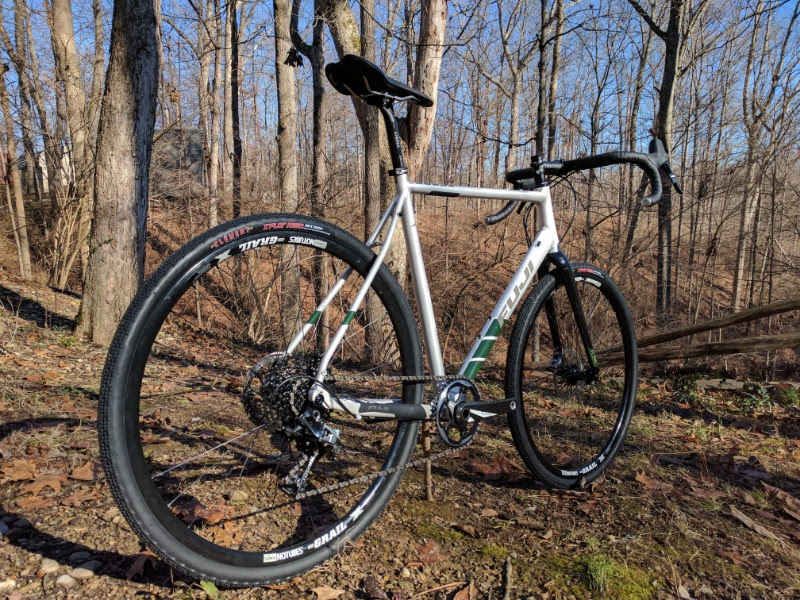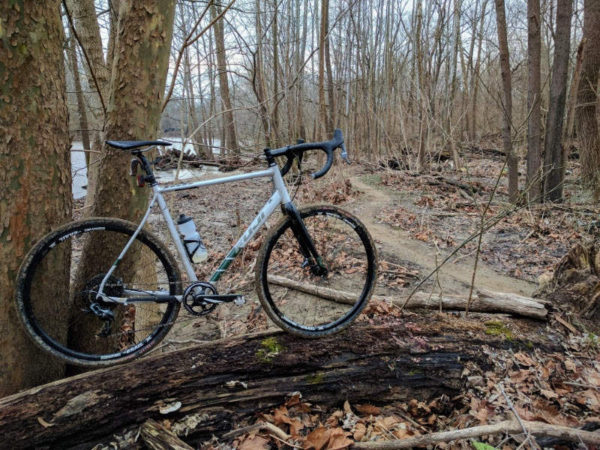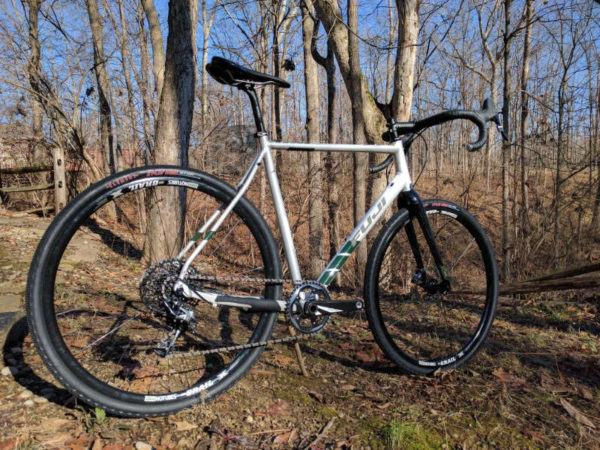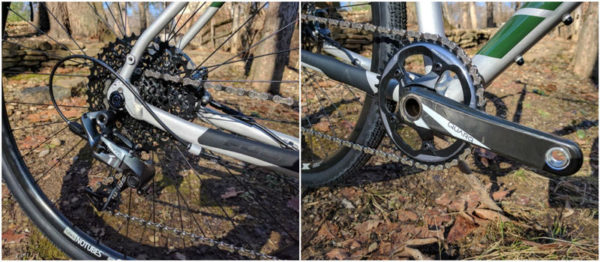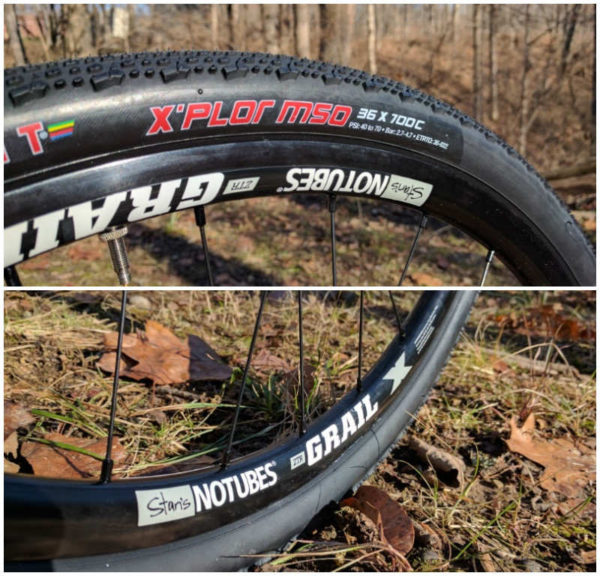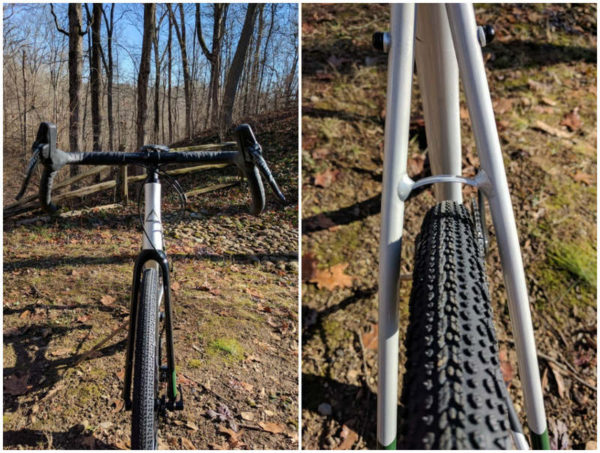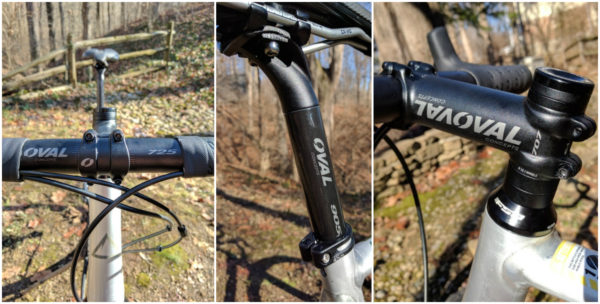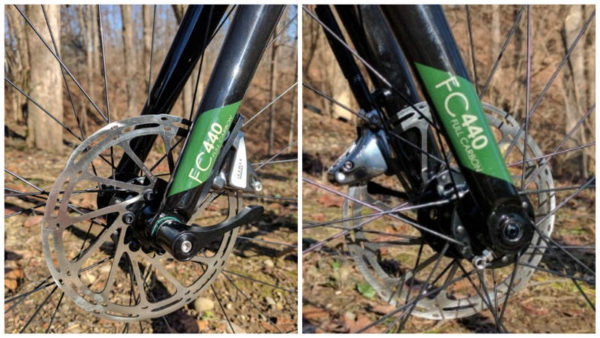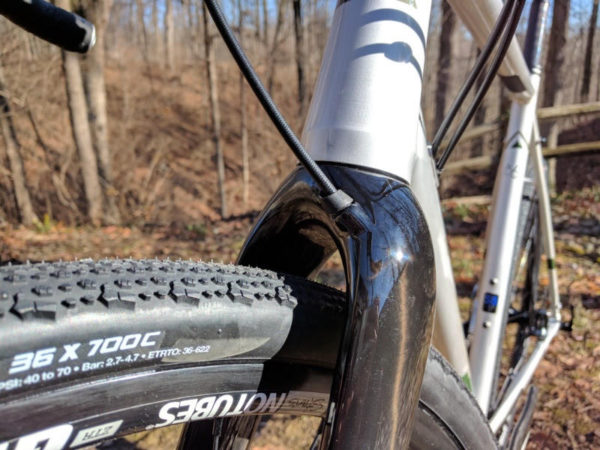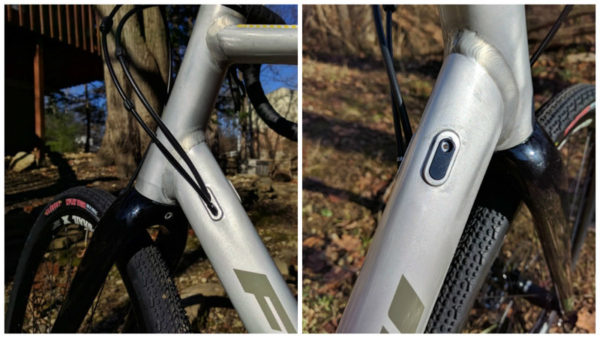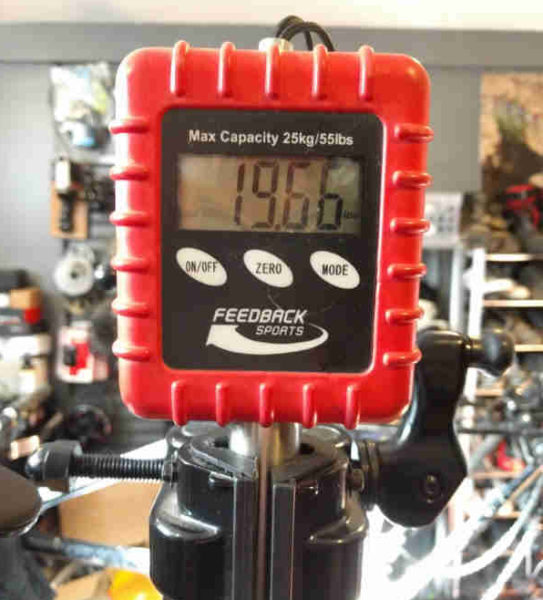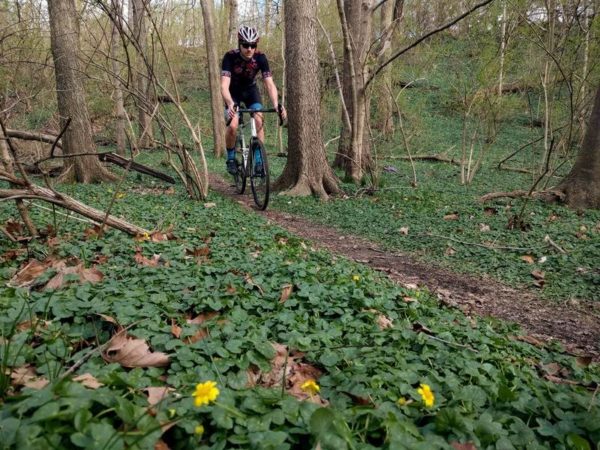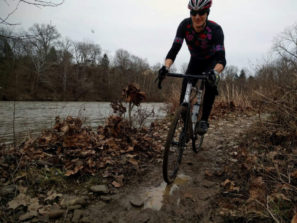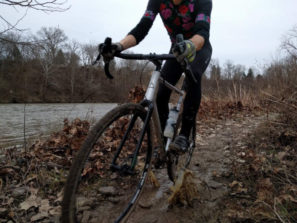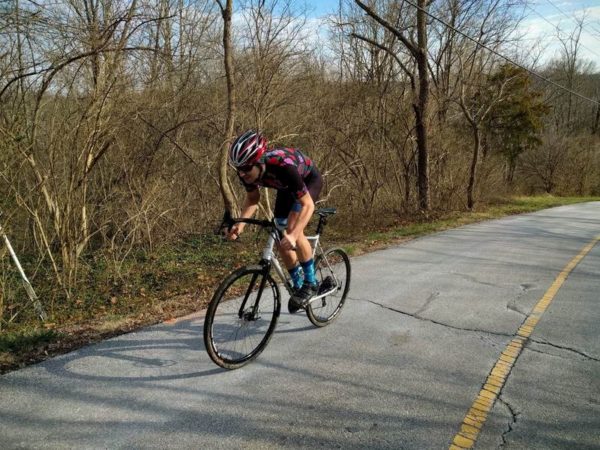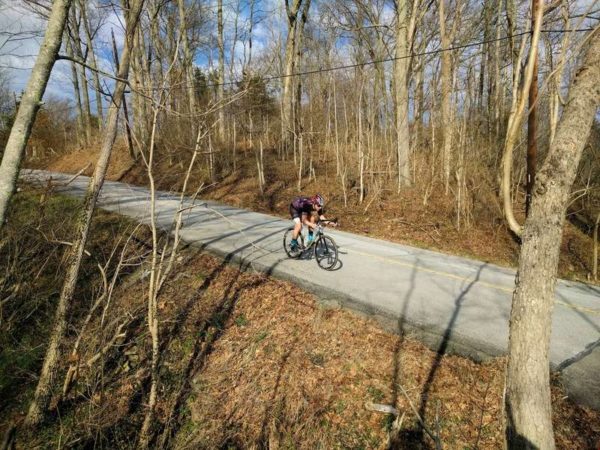The only nice thing I can say about this past winter has been the swing in seasons. There hasn’t been a day that has kept me from getting out on some version of our favorite 2-wheeled machines. When trails are good there’s mountains to be tamed, and when trails are bad there are roads to be fought. When both are fair is when adventure rigs such as the Fuji Jari become an easy choice. The Jari is designed as a gravel/adventure bike, but in lieu of proper gravel itself it was always happy for the short singletracks around town. Thanks to the wide ranging capabilities the Jari offers, there never was a need to load up and drive around to trail heads. Though it’s not the most efficient road bike, it provides a comfortable base on and off road. Get the full build and review past the break…
Out of the Box
Of the four Fuji Jari editions, we received the top-end 1.1 build, which comes stock with a 1 x 11 Sram Force drivetrain and hydraulic disc brakes. The gear ratio seemed a bit strange at 42 x 10-42 which is seen when the rear derailleur reaches for the 42 out back. Crosschained onto the big cog, it initially caused a little noise but did improve over time. The cassette is mounted on an XD driver, which may restrict some from swapping wheels/cassettes. Fuji went with the Quarq Prime crankset which also seemed an odd choice (suggesting gravel riders who will want to upgrade to the add-on power meter option through their local bike shop). But compared to its Force counterpart there’s little difference… minus the branding.
One of the ride characteristics that every bike needs to address is how much vibration damping is provided. This is no full suspension rig, but the way it handles bumps, rocks, you name it, it did manage to impress me every time I hopped on.
The carbon fork and curved seatstays do well deflecting some of the smaller bumps, but I know better than to credit the performance to the frame alone. I feel like the 700 x 36mm Clement X’Plor MSO tires were an excellent choice by Fuji. They do a good job blending performance in both the dirt and pavement. I kept the tire pressure pretty high around 60psi regardless of the terrain, but depending on conditions they can range from 40-70 psi. That rubber rolls on a Stan’s NoTubes Grail Team wheelset with thru-axles & 100/142 spacing.
The cockpit is full Oval Concepts from bar to seat, which in alloy guise I’m sure helps in the pricing department. Though they’re not what some would consider a premium brand, they get the job done. Coming from more of an either/or road or mountain background, I found the flared drops a bit strange and took me time to get used to. Getting low doesn’t necessarily seem like it makes the rider any more aero, but on the dirt it does keep the forearms from rubbing and allows for easier handling.
The monocoque carbon fork is built with a 12mm thru-axle, flat-mount brake surface, tapered steerer, and includes fender mount tabs for the bottom bolts (right photo). The brake rotors are 160 mm providing more than enough stopping power (although the fork can work with 140s.)
Look back under the toptube up there and you’ll see the frame’s ‘portage pad’ a concession for shouldering the bike. It wasn’t so much padding as it was grip. More on that below.
The cable & brake lines are kept mostly clean with internal routing. I say mostly because the rear derailleur cable and rear brake line get kicked out at the bottom bracket. It would been nice to hide the cable in the chainstay, but ultimately the current setup reduces headaches when installing a new cable. As you can see there is an extra port on the right if additional cables are added, for a double setup for example.
It weighs in at under 20 lbs at 19.66lb/8.92kg (size 58) out of the box without pedals, cages, lights, and any other accessories such as mud that you will choose to add.
Out on the Trail
Having the ability to go on an adventure out the back door was something I thought I had already experienced. There’s the choice between spending the day on roads or on the trails. The Jari wasn’t my first adventure bike ride, but it was my first opportunity to experience this adventure lifestyle for the real long-term.
As I mentioned earlier, the Jari proved to be a smooth and comfortable complete bike. A benefit of being smooth is control and confidence. It’s off-road abilities such as traction and handling reminded me of a cross bike minus the speed and aggressive position. The portage pad on the underside of the top tube isn’t what I’d consider a pad, it’s more like a rubber grip. Anything is better than frame on bone contact though. They use the same material on the chainstay’s slap guard. The rubber itself has been durable enough, but the adhesive used hasn’t created a great bond between guard/pad and frame; something that doesn’t look like it will last the life of the frame. The cockpit setup feels tailored to the trail/gravel side of things, with an upright position even with the stem slammed and buried. The flared offset drop bars, again, work well by offering some room for the arms to move while on the dirt leading to better maneuverability compared to a standard dropbar. Also, there’s more leverage over rooted climbs due to their wide stance. The Jari’s overall wheelbase allowed plenty of toe clearance through tight obstacles and turns.
Back on the Road
I know the Jari isn’t designed to be a super road-friendly bike in this setup, but half of the adventure is getting to where the off-road starts. Speed is easily one of the top three most important things to me. I can’t knock the Jari on that front too much because honestly the bike isn’t designed for speed. Yes, it handles dirt and road well enough, but the Jari’s real goal is to keep you on the bike for that extra mile. It’s not just the geometry and wide tires that lead to its sluggish road performance. Back to the cockpit, the flared drops instantly foil any attempt to get into an efficient aero tuck. The best alternative I could find was to grip the hoods and limbo forward as low as I could go. Naturally the wider tires and alloy wheels add a bit of rotational weight which also hinders acceleration, but the momentum created helps on rolling hills.
Being able to roll over gravel and other road debris turned out to be its biggest advantage on pavement. It’s nice knowing that when you hit a patch of gravel your wheel won’t ricochet around like a cartoon bullet. I still wouldn’t recommend sending it 110% into a gravel corner, but it did inspire plenty of confidence when things got dicey at speed.
In the end, the Jari proved to be a good means of slowing down, and enjoying everything that is presented. Whether it was a small loop on the side of a road, or a full on single track MTB trail, the Jari took it in stride and turned a commute to a trail into a comfortable all day ride.
